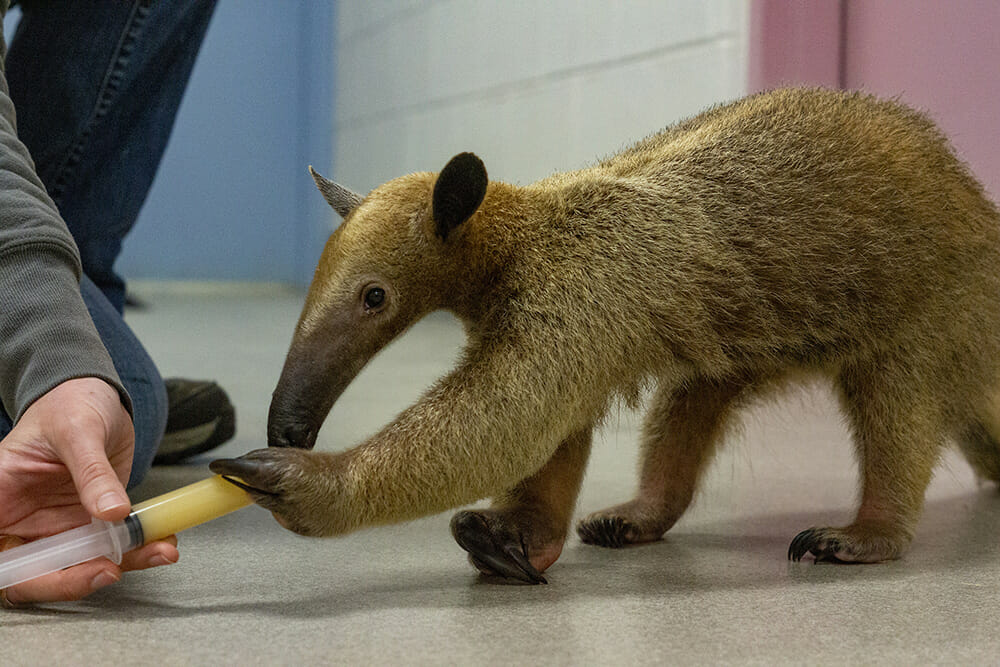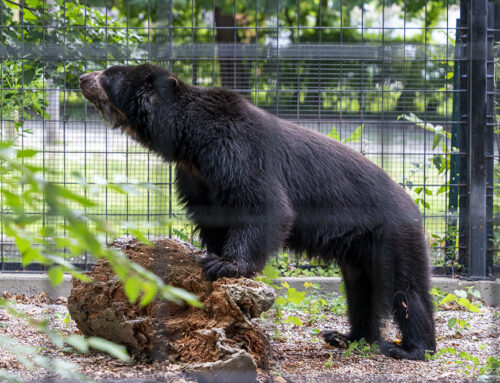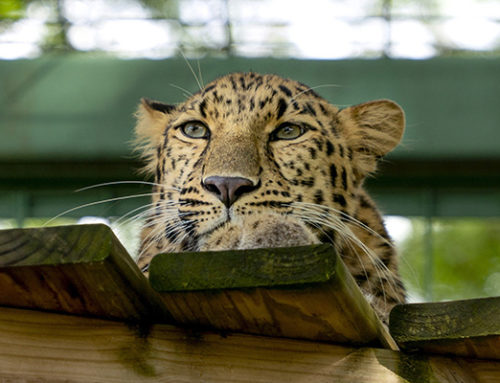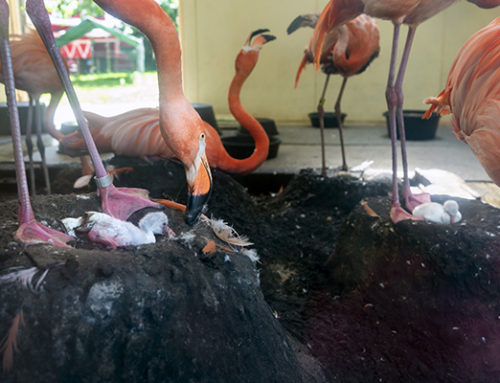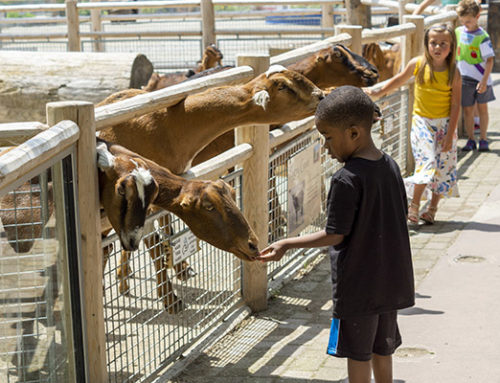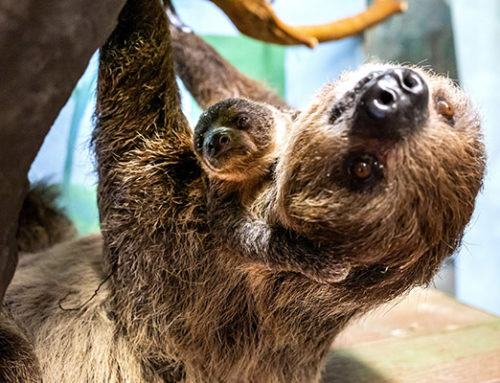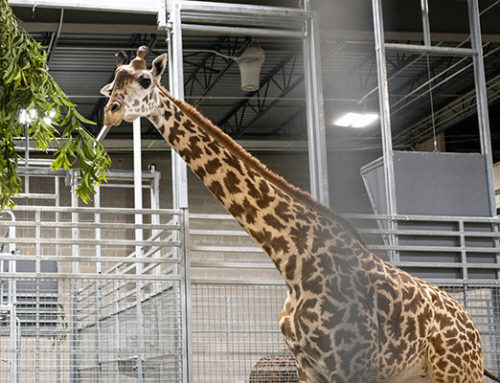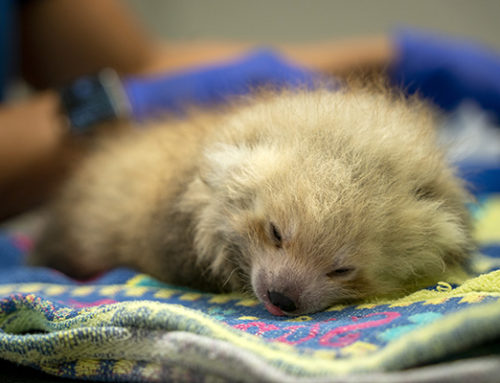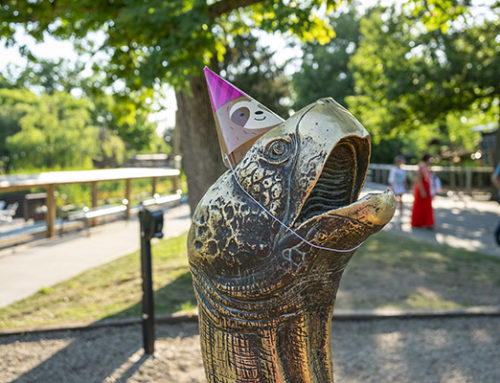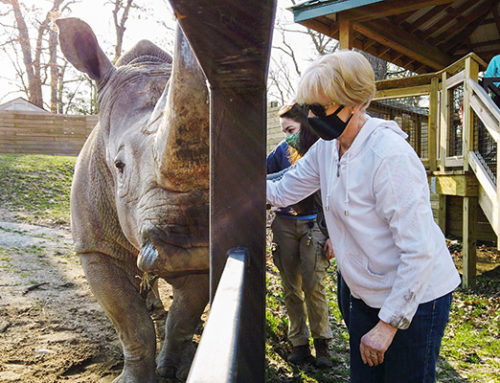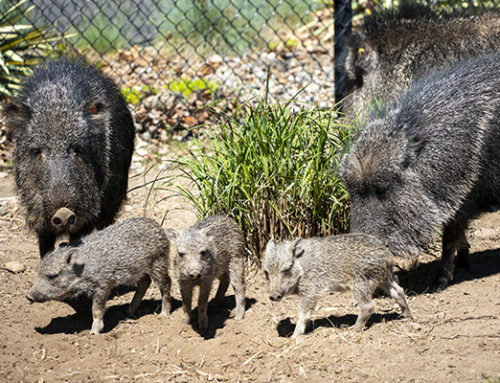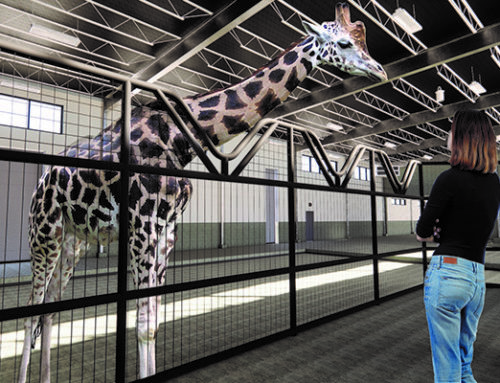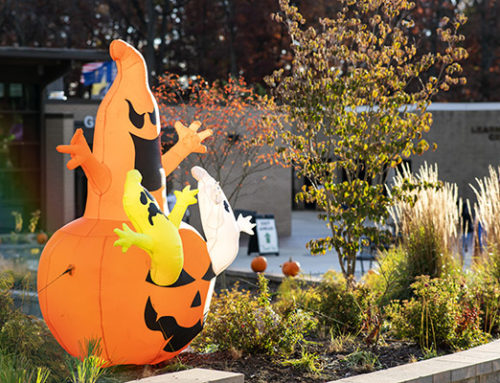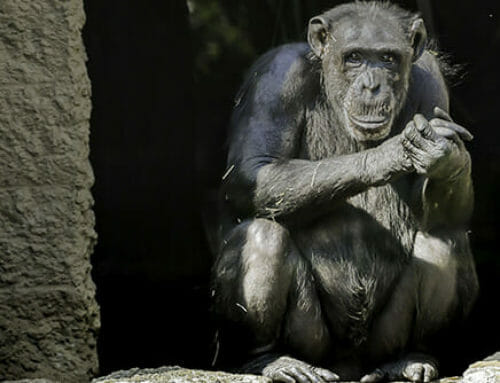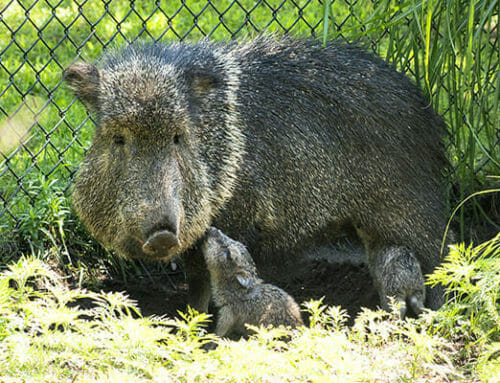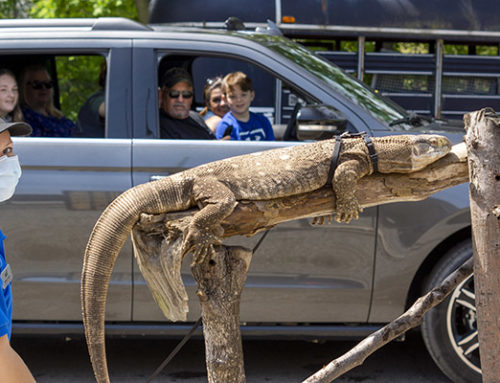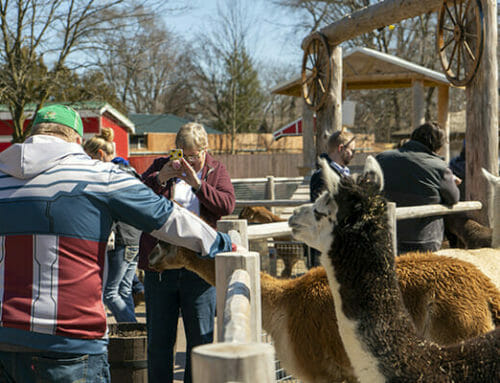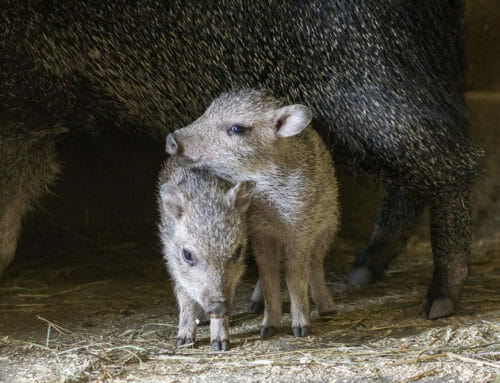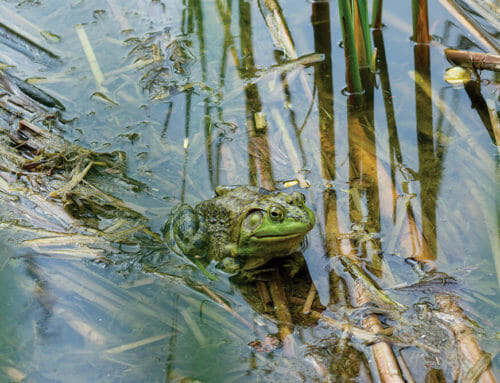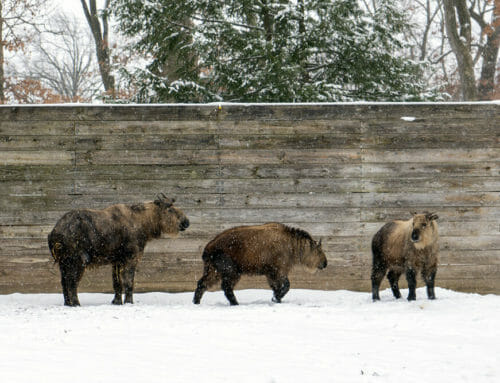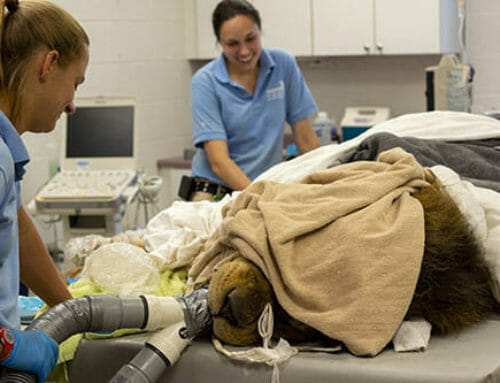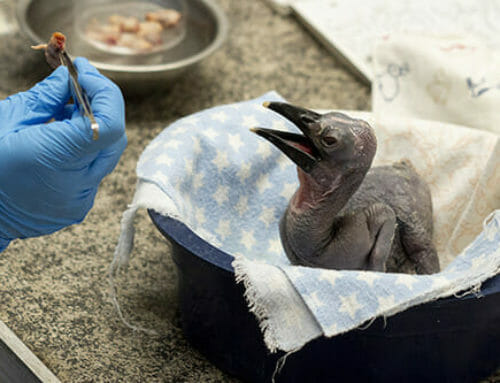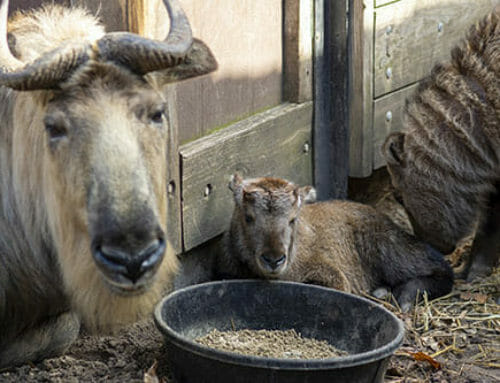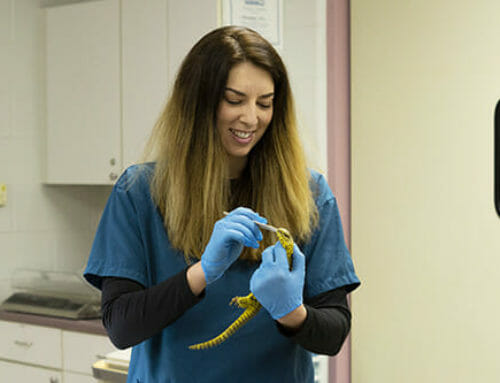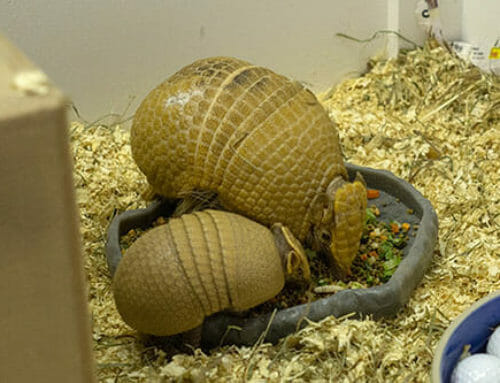The Potawatomi Zoo is happy to announce that Olive, an 8-month-old female southern tamandua, has moved to the Zoo. Tamanduas are a species of small, semi-arboreal anteater.
Olive is part of the ambassador animal program, so she will not be in a publicly visible habitat. Ambassador animals make appearances at Education Department programs, Wildlife Encounters, and keeper talks at the Zoo.
“It’s always exciting to bring an animal to the Zoo that people will have the opportunity to experience up close,” says Josh Sisk, executive director of the Potawatomi Zoo. “As an ambassador animal, we hope Olive will help visitors be inspired to learn more about the rich diversity of life in the forests of South America.”
Tamanduas resemble their closest relative, the giant anteater, but are much smaller, usually less than 20 pounds. Olive currently weighs about eight pounds.
Tamanduas spend a large portion of their lives in trees, so their tails are mostly furless and prehensile which allows them to securely grip tree branches. They are less agile on the ground than giant anteaters.
Like giant anteaters, tamanduas have large claws and long tongues to help them find and eat their preferred diet of ants and termites. In the wild, tamanduas might also eat bees and small amounts of fruit or honey. At the Zoo, Olive eats a blended slurry of insectivore pellets, vitamins, honey, yogurt, egg, and ground meat. One of her favorite treats is applesauce.
Tamandua conservation status is considered to be of least concern. They reside in forests, savannas, mangroves, tropical rainforests, scrub rainforests, and close to streams and rivers throughout South America.



